North Atlantic right whales 'will be extinct in 25 years' – unless we act now to save them
The imperilled animals are acting in strange and disturbing ways, and the battles between fishermen, conservationists and government show little sign of stopping the species’ decline
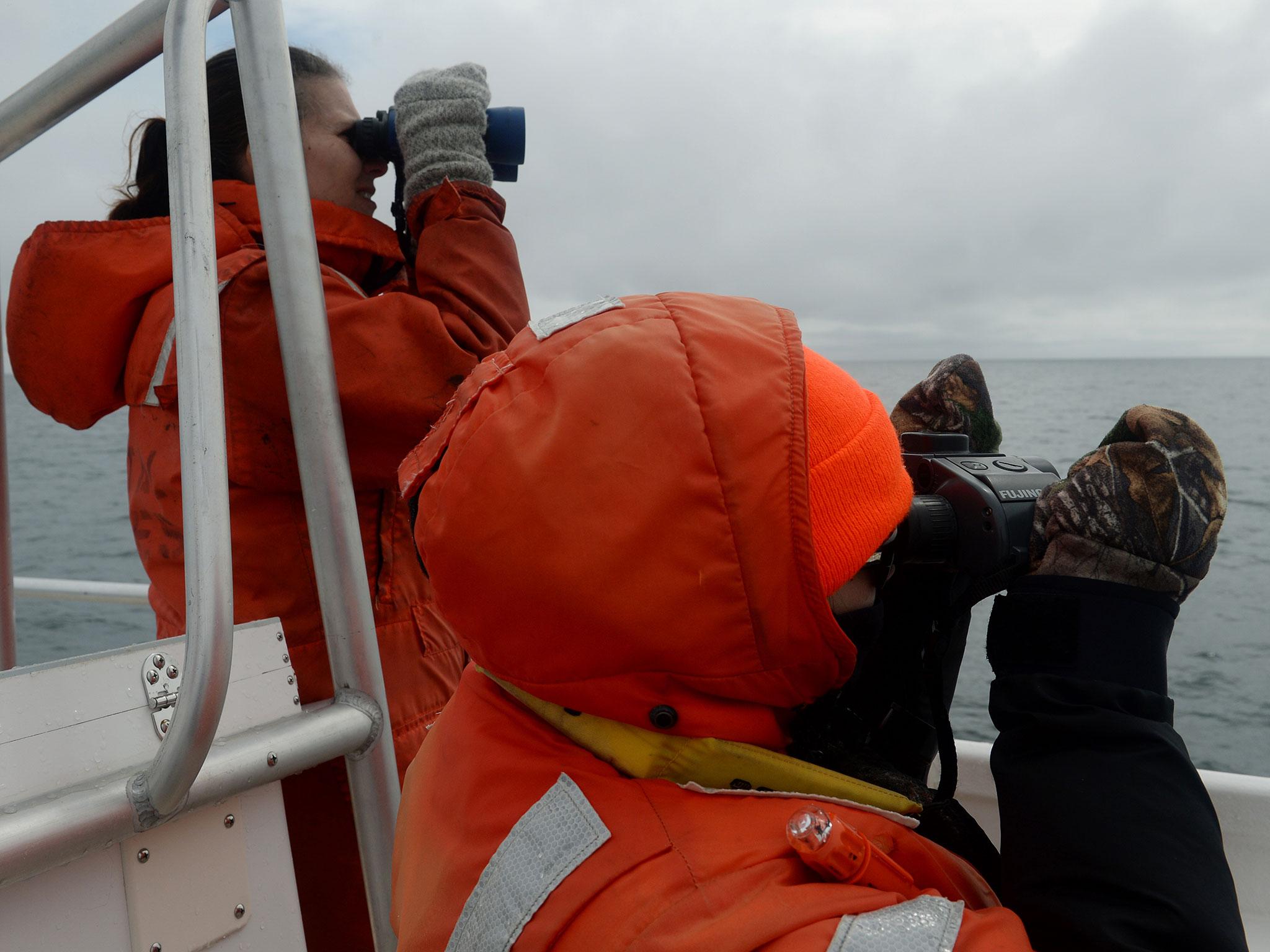
Your support helps us to tell the story
From reproductive rights to climate change to Big Tech, The Independent is on the ground when the story is developing. Whether it's investigating the financials of Elon Musk's pro-Trump PAC or producing our latest documentary, 'The A Word', which shines a light on the American women fighting for reproductive rights, we know how important it is to parse out the facts from the messaging.
At such a critical moment in US history, we need reporters on the ground. Your donation allows us to keep sending journalists to speak to both sides of the story.
The Independent is trusted by Americans across the entire political spectrum. And unlike many other quality news outlets, we choose not to lock Americans out of our reporting and analysis with paywalls. We believe quality journalism should be available to everyone, paid for by those who can afford it.
Your support makes all the difference.The crew of the research vessel Shearwater has been out on the water for six frigid hours with almost nothing to show for it.
On deck, two coverall-clad observers brace themselves against the biting wind and snow, alert for the white plume of a spout or the fleeting wave of a tail.
On the bridge, marine biologist Charles “Stormy” Mayo searches, too, his brow furrowed in a deepening frown. It is early April, and these plankton-rich waters should be full of hungry animals. But all he can see are dark grey waves and dull, cloudy sky.
“Where the hell are the whales?” he demands.
For years, spring has signalled the return of North Atlantic right whales – one of Earth’s most endangered species – to Cape Cod Bay.
But recently the imperilled animals have acted in strange and disturbing ways. Females are having fewer calves; not a single newborn was seen this year. The whales are skipping favoured feeding grounds and showing up in unusual places. And in the past 11 months, 18 whales have been found floating, dead – the worst mortality event since scientists began keeping records decades ago.
In an era when species are vanishing 100 times faster than usual, “the whales are a metaphor for what we have done to the planet”, Mayo says.
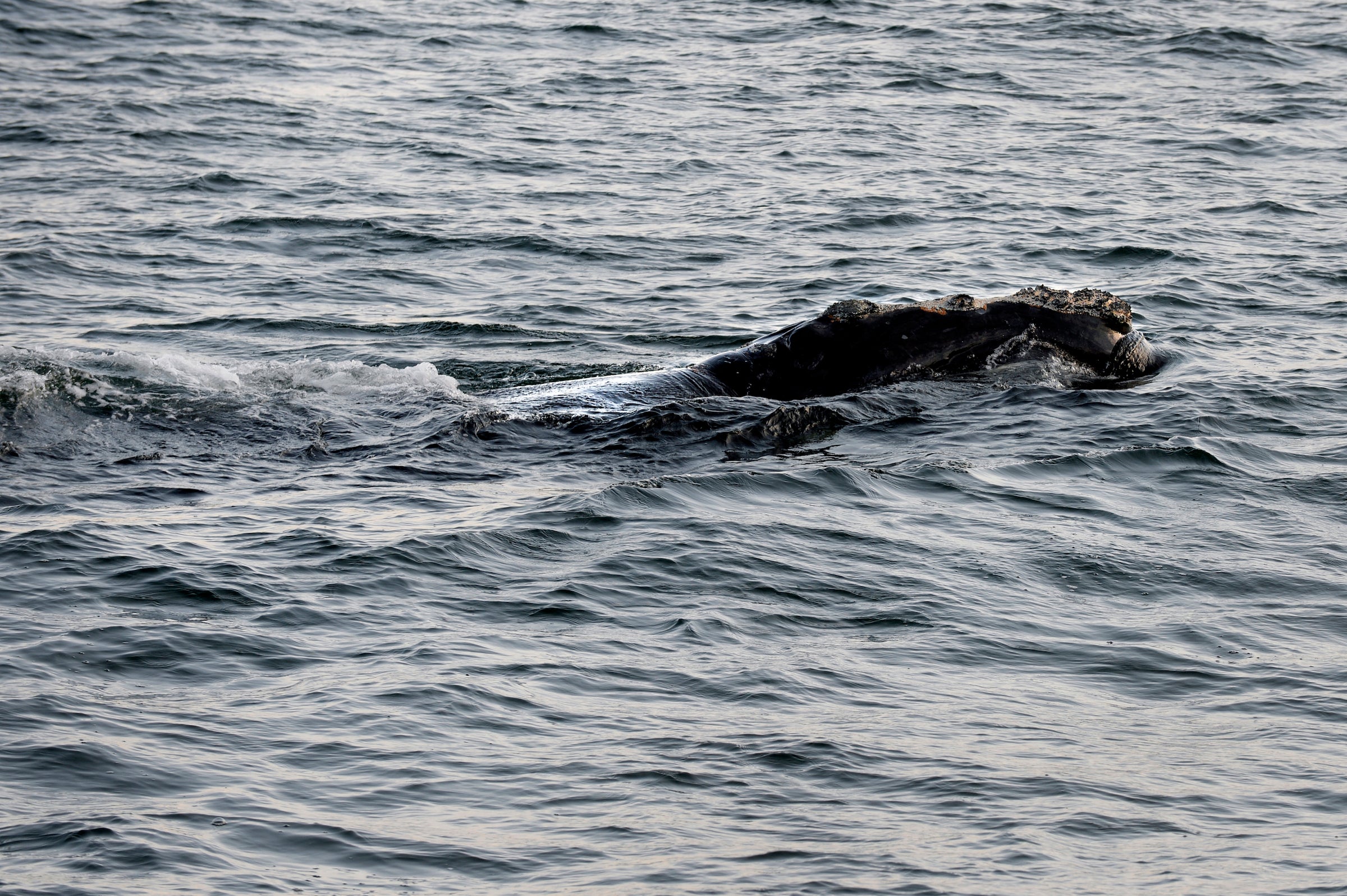
A century ago, humans had slaughtered nearly every right whale in the Atlantic. Now climate change seems to be shifting the animals’ food source. Their habitat has been polluted with sewage and made noisy by construction and seismic tests. Speeding ships and tangles of hard-to-break fishing rope pose deadly threats.
New technology and tightened regulations could protect the whales from some of the biggest hazards. Yet political efforts have stalled, lawsuits linger unresolved, and fishermen fear what potential remedies might cost them.
Fewer than 450 North Atlantic right whales remain, including just over 100 breeding females. With so many dying and so few being born, it is thought that the population will no longer be viable in 25 years unless something changes.
For the first time in his career, Mayo, 74, is using a word he had long avoided: “Extinction.”
North Atlantic right whales are so strange-looking that early sailors sometimes took them for sea monsters. They are massive animals – up to 50 feet long – with broad black bodies and powerful tails. Their long arching mouths, which begin above their eyes, can open wide enough for an adult human to stand inside. But these whales eat mostly plankton, which they filter out of the seawater with long curtains of baleen. Distinctive patches of raised, roughened skin cover each right whale’s head – allowing researchers to identify individual animals.
The species gets its common name from whalers, who considered the docile, oil-rich creatures the “right” whale to hunt. In the fishery’s heyday in the 16th and 17th centuries, crews setting out from Massachusetts and New York caught as many as 100 per year. One account describes the death of 29 right whales in Cape Cod Bay on a single day in 1700. By 1935, only about 60 remained.
In subsequent decades, they gained the protection of the US’s Endangered Species Act and Marine Mammal Protection Act, which helped boost their numbers to a peak of 482 in 2010.
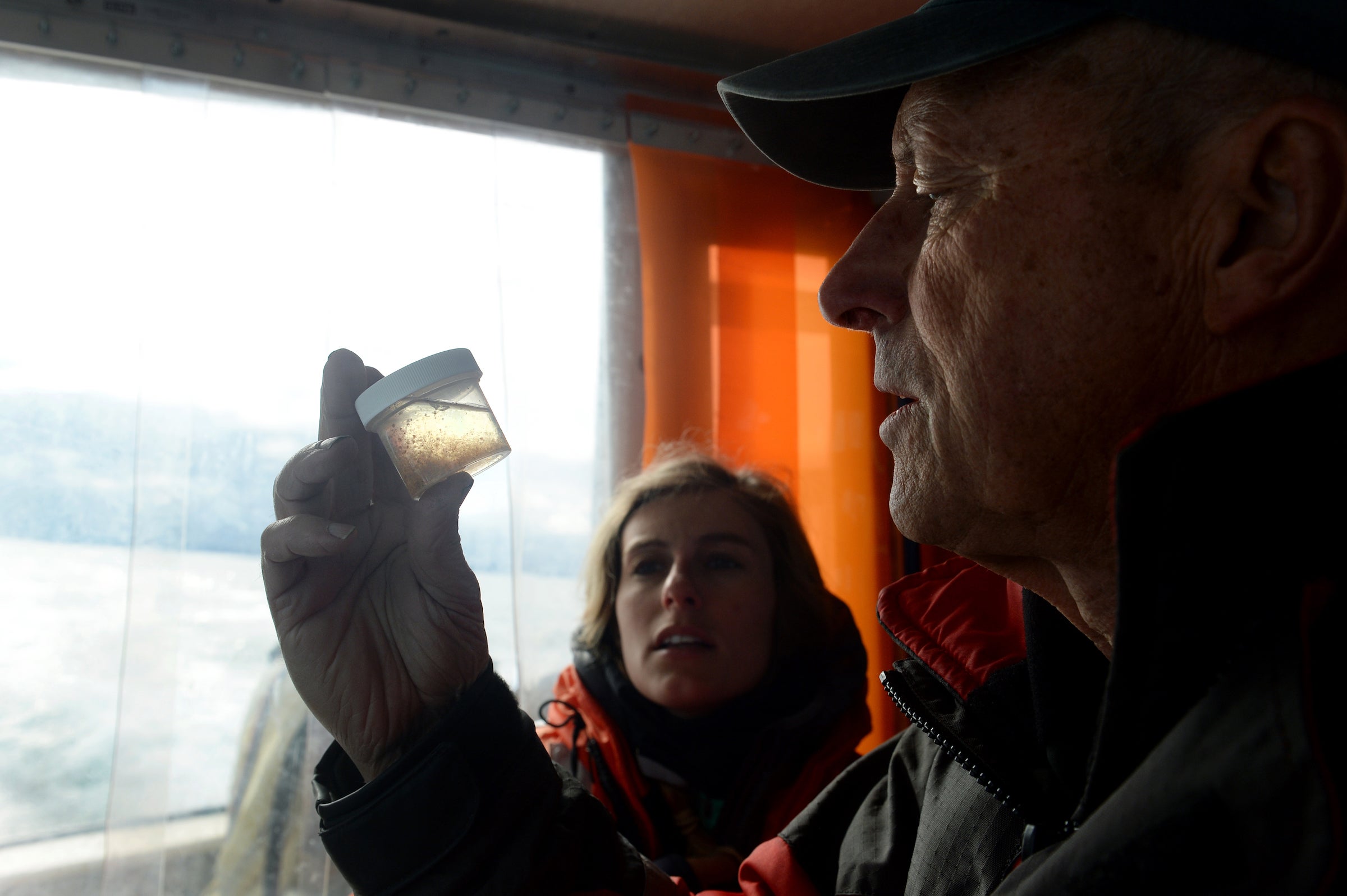
But then something changed, and the population started to decline again. By 2016, the last year for which reliable data is available, it had dropped to 451.
And then disaster struck.
Since last June, 12 whales have been found dead in Canadian waters and six in US waters. At least three had been entangled in fishing gear and four showed blunt force trauma, most likely from being struck by ships. Some of the deaths may be consequences of the whales’ unexpected appearance in the Gulf of Saint Lawrence last summer. Because whales are usually rare there, Canada had few protections in place.
Now it seems almost certain that the right whale population has fallen into the 430s – lower than it has been in a decade.
And that does not take into account whales that may have died far out at sea, without ever being noticed by humans, says Heather Pettis, executive administrator for the North Atlantic Right Whale Consortium.
“That’s what scares us,” she says. “We think we could only be seeing half to a third of all mortalities.”
If researchers have seen 18 deaths in the past 11 months, “you can’t even let your mind go there”, she says. “It does not take very long for irreversible damage to be done to a very small population.”
On a rainy morning in a dreary conference room in Provincetown, Massachusetts, the National Oceanic and Atmospheric Administration (NOAA) has assembled its “Take Reduction Team” – a group of scientists, government officials and fishery representatives – to figure out how to save the species.
The discussion is heated from the start. For one thing, no one – not whale researchers, not lobster fishermen – can fully explain why right whales are so frequently ensnared in the ropes that connect lobster pots on the seafloor to buoys on the surface.
Whatever causes entanglements, says Amy Knowlton, a senior scientist at the New England Aquarium, the episodes have become worse in recent years. Improvements in rope have made the cordage stronger and therefore harder for whales to escape, leading to a surge in the number of extreme cases of entanglement. About 85 per cent of all North Atlantic right whales bear entanglement scars, and the problem now causes an average of 3.25 deaths and severe injuries per year.
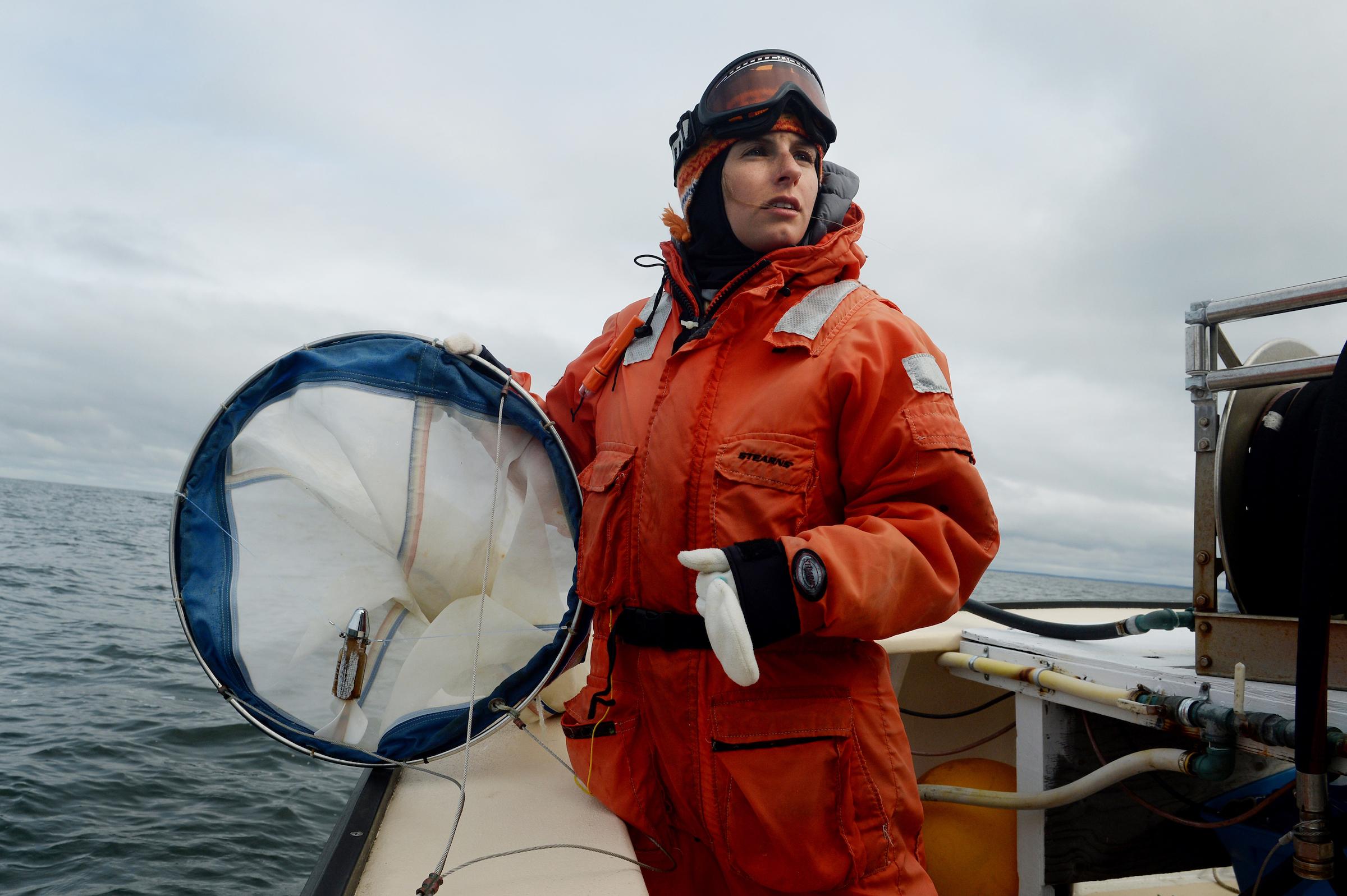
The number of human-caused losses that can occur without threatening the future of the population, NOAA estimates, is fewer than one per year.
An entanglement can kill a whale quickly by drowning it, or over the course of many painful months. Trailing yards of rope, often with a 50- or 60-pound lobster trap still attached, slows the animal and causes it to lose weight. The lines can cut into the flesh, opening wounds that are easily infected.
Females seem to be hit the hardest, Knowlton says. Only a third of female whales that experience severe entanglement survive, and those that do are less able to have calves.
Fishers have tried bunching together traps on a single line to reduce the amount of rope in the water – but entanglements keep happening. Scientists have suggested ropeless traps that could be summoned to the surface electronically – but lobstermen recoil at the prices involved. Colour-coding gear so it can be traced might help in tracking the most dangerous places for whales, but a fishing gear manufacturer told the group his company probably would not be able to make and sell enough distinctive rope.
Erica Fuller, a lawyer with the Conservation Law Foundation, observes the proceedings with growing frustration.
“We’re facing extinction,” she says afterwards. “We don’t have time to say nothing works, or everything is too expensive.”
Her organisation is one of several conservation groups to sue the National Marine Fisheries Service over a recent biological opinion regarding right whales. The agency is reviewing its opinion.
Fuller notes that after last year’s mortalities, Canada acted quickly to implement new protections, including area closures, speed restrictions and a $167m investment in research on endangered whale species.
“I don’t think there are easy solutions,” she says. “But I think there are solutions.”
John Haviland, president of the South Shore Lobster Fishermen’s Association, was at the meeting to represent the views of fishermen who would be affected by right whale protections. But he said little as the debate ping-ponged.

For the past four years, Haviland’s trap-fishing grounds in Cape Cod Bay have been closed during whale season, February through April. The closure has cost him tens of thousands of dollars, he says after the meeting. “It’s like going to prison three months every year of my life.”
Like most of the lobstermen who operate in the North Atlantic, Haviland has never seen an animal entangled in his lines. And even as his gear sits unused in storage, whale entanglements have gone up.
“You see the angst I have?” he asks.
But Haviland is a pragmatist. After reading about Knowlton’s research, he got a grant from the Massachusetts Environmental Trust to develop a sleeve that could be spliced onto ropes to lower their breaking strengths. Haviland compared the hollow, braided contraption to a Chinese finger trap that would snap when a whale pulled on it.
“My thinking is, the right whales have the Marine Mammal Protection Act and the Endangered Species Act in their favour,” Haviland says. “They have two things protecting them. There’s nothing protecting the commercial lobster fisherman.”
“So why not use the best available science to coexist with the right whale?” he continues. “We’re trying to do the right thing.”
But last year, when his association applied for an exemption to use the new product in limited areas during the seasonal closure, NOAA concluded that the use of the sleeve would not offset the additional threat to whales.
Haviland’s request was denied.
By the time the Shearwater is halfway back to harbour, the sun emerges, casting a glow over the bay. But the crew has mostly given up hope after not spotting a whale all day.
Mayo descends from whalers who once hunted in these waters, and he has spent the better part of his career looking for these animals. The right whale survey programme at the Centre for Coastal Studies, which he founded, is the oldest such programme in the world.
He saw several whales feeding here just last week and didn’t expect them to leave so quickly.
Then again, “Expectations in such a rare animal are not even expectations. They’re hopes.”
This is the frustrating reality of studying endangered species.
It is spending 20 years sounding the alarm about entanglements and seeing the issue only get worse. It is battling bad weather in search of explanations for shifting migration patterns and the decline in birthrates – not knowing whether the problems can even be solved. It is watching as existing protections – like the Marine Mammal Commission, which the Trump administration has moved to defund, and the Endangered Species Act, which some lawmakers want to “invalidate” – come under threat.
“It’s trying to save animals that are very hard to find and struggling for existence in a system that is going to hell,” Mayo says.
Suddenly, observer Lauren Goodwin’s voice comes crackling over the ship’s radio: “Blow!”
Mayo jumps to his feet and scrambles up a ladder to the deck, where Goodwin gazes through binoculars at the seemingly empty sea.
“I think those are fluke prints,” she says. “See, there. And there.” She points to smooth circles on the choppy water that are created when a whale coasts beneath the surface. “It’s coming toward us!”
And then, barely 20 feet away, a sloping black head surfaces.
Everyone on the Shearwater springs into action. Goodwin and another researcher unravel nets to collect samples of whatever the whale is eating. A third crew member pulls out a camera and starts snapping photos of the animal.
Mayo crouches on the deck and gazes at the whale, captivated. With just its craggy head visible above the waves, the comparison to a sea monster seems suddenly apt.
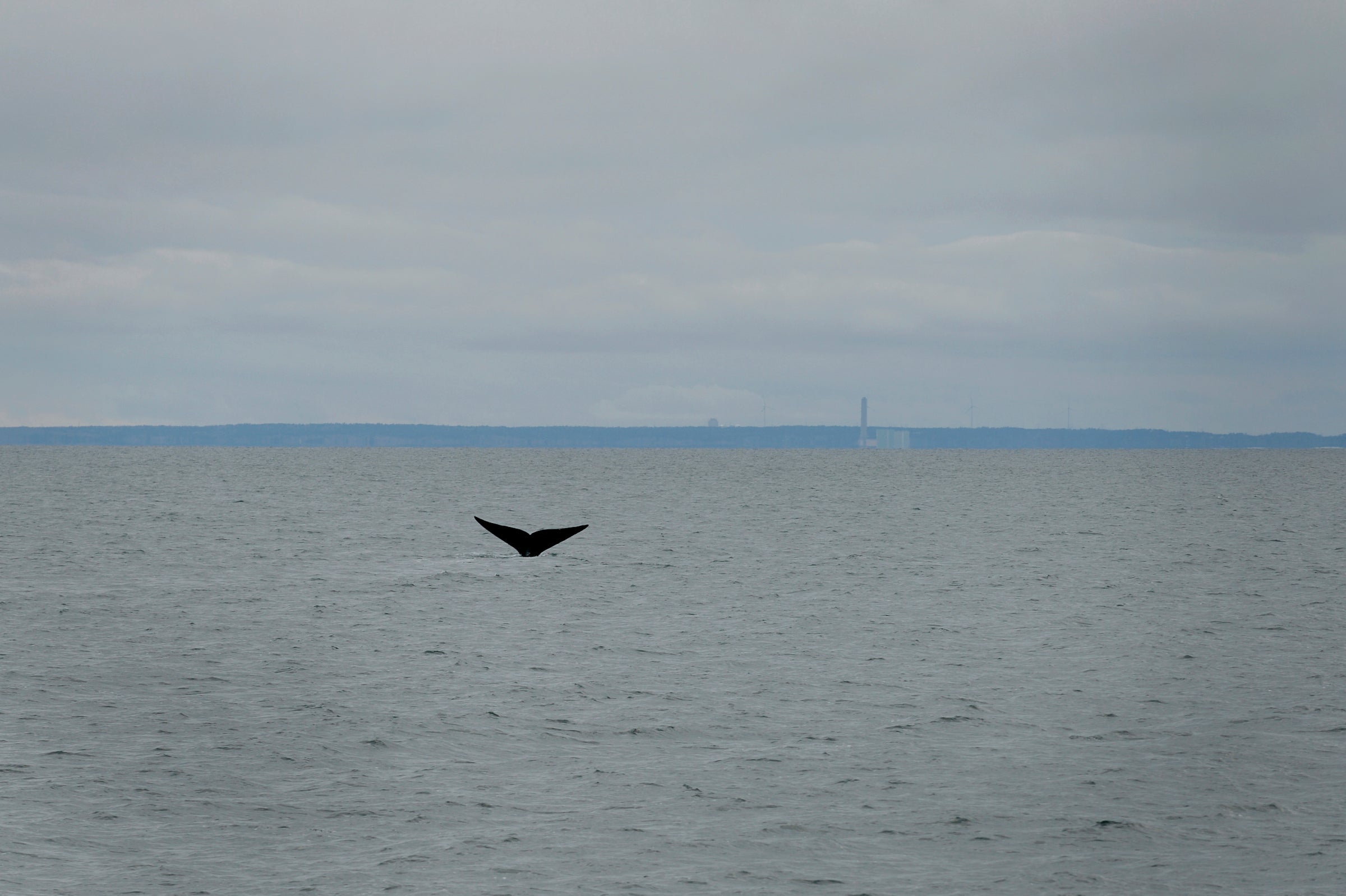
The animal makes a snuffling sound and nods, as if trying to shake something out of its baleen.
“Whoa, whoa!” Mayo says. “Cool! Got something going on there.”
He watches for the next several minutes as the whale zigzags through the water, slurping up massive mouthfuls of plankton. During one pass, Mayo notices horizontal white marks across its back.
“See the entanglement scars?” he calls out.
Later, the Centre for Coastal Studies will identify the whale as a female called 4617. She’s only 2 years old, at least eight years away from being able to breed.
The young animal has been seen in Cape Cod Bay before, but her scars are new – a testament to the risky world in which she is growing up.
“It’s distracting, I guess, simply to know what she will go through in her life,” Mayo says. “Her life will be shorter. And that shortened life, because it’s shorter, will threaten the population... Her future is not a good one.”
For now, 4617 seems healthy. She has made it to Cape Cod. Her scars, though troubling, are relatively minor. And the food samples the scientists just collected suggest that she has found plenty to eat.
It’s not much, but it’s something.
With a flip of her tail, the whale plunges into a dive, and the Shearwater continues on its way. By the time she resurfaces, 4617 is just a small, dark spot on the horizon, barely visible in the fading light.
© Washington Post
Join our commenting forum
Join thought-provoking conversations, follow other Independent readers and see their replies
Comments